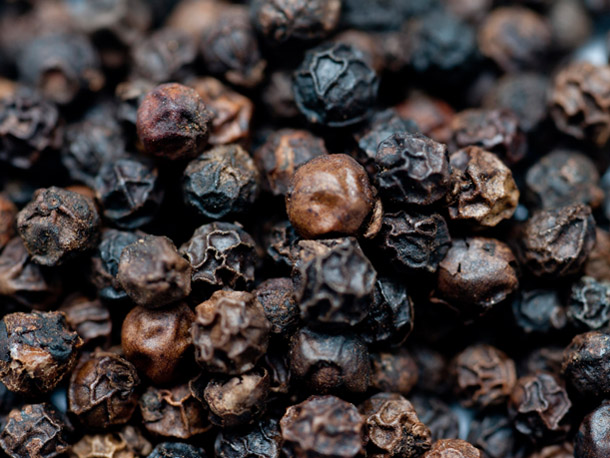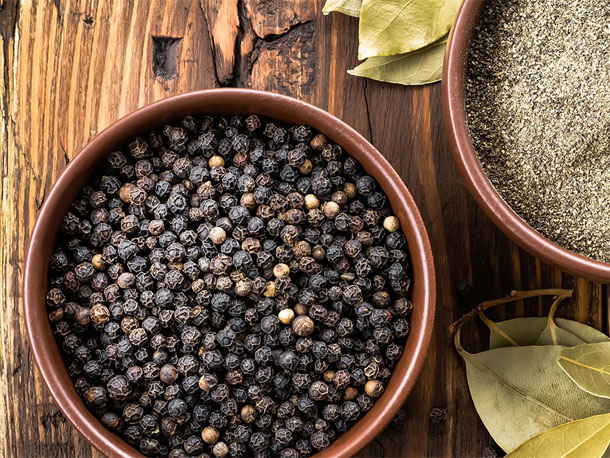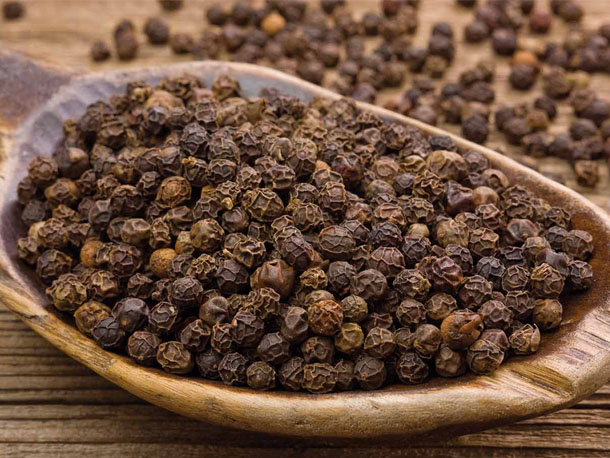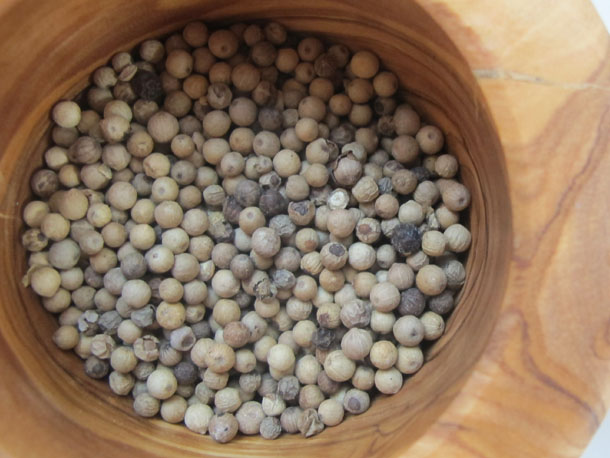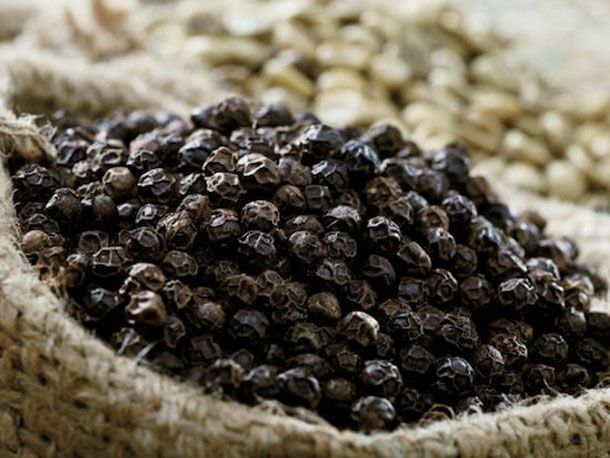Analysis: Pesticide residue strains pepper market
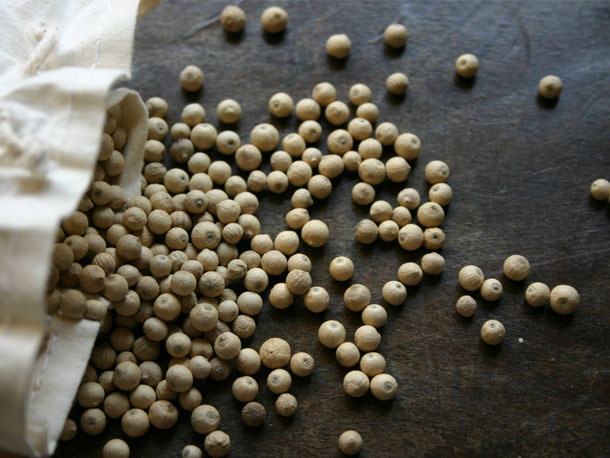
International pepper dealers are finding that there is an increasing focus on the issue of pesticide residues in material from Vietnam and that this is exacerbating price differentials in the market.
It was recalled that the issue was brought to light at a major spice industry conference about three years ago.
“The problem is not getting worse it’s just that there is more focus on it now. I don’t feel that the Vietnamese are using more pesticides than three years ago.”
Blair Coutts of UK trader Blair Impex commented, “Some stockists and end users are not buying Vietnamese black pepper simply because it is likely to have a pesticide residue problem. Until now, and maybe not even now, Vietnam has not really cared because Eastern Europe and places like America aren’t so fussed about it.”
Coutts noted that this has created a two tier pricing structure in which Vietnam’s rival origins, such as Malaysia and Brazil, are tending to command higher prices than Vietnamese pepper.
Kai Jantzen of Hamburg trader Jantzen & Deeke was asked to respond to reports that Jantzen & Deeke had ceased importing pepper from Vietnam due to the problem of pesticide residues.
“There is a big part of truth to this,” he revealed. “It’s a very delicate issue. The issue has been pending for about three years.”
Jantzen clarified that the problem of high pesticide residue levels is particularly strong in the case of Vietnamese black pepper – possibly applying to as much as 80% of output – whereas it is less severe in the country’s white pepper.
“We, along with a lot of German customers and traders, have reduced our sourcing from Vietnam tremendously. Whether this is the reason for the current price gap between Vietnam and all other origins is not clear. But of course, everybody who is conservative and is trying to source pepper which is suitable for the EU, has to avoid Vietnam pepper,” he said.
In addition to those Eastern European countries that are not currently part of the EU, and the US, other non-EU destinations that are continuing to import Vietnamese pepper include Africa, the Middle East, Asia, and South America.
Hence, Jantzen explained, “I am buying much less Vietnamese pepper than in previous years, because most of our customers are in Europe, but of course, for some other customers that are outside Europe, I still buy.”
Increased EU testing
Van der Does found that about two years ago the southern European/Mediterranean countries had been the first to tighten up on testing for pesticide residues in Vietnamese pepper and then over the last year or so all the main authorities in Europe had increased their testing regime. “As a result, more defective shipments have been found. So that became a general problem for all the importers in Europe. I am not sure yet how much Vietnam pepper is affected in terms of quantity, but there seems to be a consensus that only about 30-40% will be fit to be shipped to Europe,” Van der Does explained.
It has been suggested that steam sterilisation should help reduce pesticide residue levels but Van der Does cautioned that this is only a partial solution to the problem as the process can only be effective on material which is only just above the permitted limits and will not work on pepper which has excessively high levels of pesticide residue.
“I fully agree that pesticide residue (in Vietnamese pepper) will be the main issue for pepper purchases, especially in Europe, this year,” Van der Does added.
Not surprisingly, Vietnamese pepper with a guarantee of being within the permitted EU limits on pesticide residue is commanding a premium. This premium is now as much as USD300 per tonne and this is expected to increase over the course of this year.
“If you look at their (Vietnam’s) conventional price (for pepper) it’s at the low end, but if you want to import it to Europe, you have to pay a premium,” Van der Does added.
Jantzen commented that the pepper market as a whole is showing a division.
The approach of Vietnam’s new crop might be seen by some as a reason for global prices to fall, but since most of this is not useable in Europe this connection cannot be drawn. In the meantime, prices from rival origins remain firm, he noted.
India’s latest crop is said to be disappointing and this origin will therefore be a net importer and looking to purchase from Vietnam, as it usually does.
Looking ahead, the El Niño weather phenomenon raises concerns for the Indonesian crops later this year – in Lampong for the black and Muntok for the white pepper. Adverse impacts from El Niño have been seen in a number of other crops in the country.
Juliano Camara of the Fortaleza, Brazil, office of Amberwood Trading, observed that Vietnamese pepper in general was being offered at lower prices than that of other origins. This could be partly due to lack of demand from Europe due to the pesticide residue issues in Vietnamese pepper and also down to the prospects of the imminent arrival of new crop, he suggested.
Camara said that Vietnamese pepper prices are currently ranging from USD600-1,000/tonne below those of Brazilian pepper, depending on the type being offered and the shipper involved.
“I traded today, sun-dried B1 (Brazilian) pepper of minimum 550 grammes per litre at USD8,000 (per tonne) while you can buy faq (fair, average, quality) 550 (g/litre) at USD7,100 (per tonne) from Vietnam,” he explained on March 15.
Limited availability
Camara warned that sun-dried Brazilian pepper is virtually sold out now as this material is usually only found at the beginning of the crop.
European buyers favour sun-dried pepper from Brazil, or, as a second option, pepper dried by indirect heat. Quantities of the latter are still available, although these are also now becoming scarce.
The country’s pepper that has been dried by direct heat methods tends to have an unwelcome smoky smell to it so is not popular with European buyers.
Harvesting of the crop in Espirito Santo starts in June/July and the crop in the north of the country starts in September/October.
“For Europeans, my recommendation is that whenever they see an offer on Brazilian pepper that is sun-dried or dried by indirect heat they should take it,” Camara urged.
Camara finds that the market in general is not particularly active on the demand side. “Traders and European industry buyers are hoping that Brazilian pepper prices might fall again and they are watching the market closely. But there is some demand from Latin American markets.”
Recent interest from Mexico reflects the fact that the import duties on Brazilian pepper into Mexico is lower than that for Vietnamese pepper, being at 10% versus 20%.
This can cancel out the fact that Vietnam is quoting lower prices than Brazil at the moment, meaning that actual prices between the two origins end up being quite similar. In addition, the transit time from Brazil to Mexico etc. is shorter than that from Vietnam to such destinations and the freight costs are lower than from Vietnam, Camara noted.
Hence, there are a number of valid reasons why Brazilian pepper is holding above Vietnamese prices at the moment, he added. For a start, Brazil is nearing the end of its 2015 crop supplies; secondly, Brazilian exporters are well aware that European buyers consider the origin a safer bet on pesticide residue issues than Vietnam; and finally, Latin American markets have trade benefits in purchasing from Brazil over Vietnam.
Jantzen viewed global buyers as extremely cautious at the moment partly on various economic concerns.
Van der Does remarked, “The market has to find a direction. Also, for buyers it is not clear what direction we are going into, so they are buying hand to mouth. Some forward contracts have been done, but that’s not in significant numbers yet. Mainly the forwards have been done to the US. Europe is not really picking up on forward contracts yet.”
In addition, China has been entering the market again to purchase Vietnamese pepper.
This generated some volatility in the week to March 11, which was followed by a steady to slightly firmer trend on prices the following week.
It also appears that Vietnamese farmers are holding on to significant levels of stocks ahead of new crop arrivals. Vietnam usually completes harvesting of its pepper crop in April.
Van der Does added that he sees more potential for global pepper prices to strengthen over the coming weeks than weaken.
In addition, it looks as though the market is set to see a continuation of the current differentials between Vietnamese pepper prices and those of the alternative global origins, which, as we have seen, is influenced in part by the issue of pesticide residues in Vietnamese material. Moreover, it is possible that the price gaps between Vietnam and the other global pepper producers might widen.

